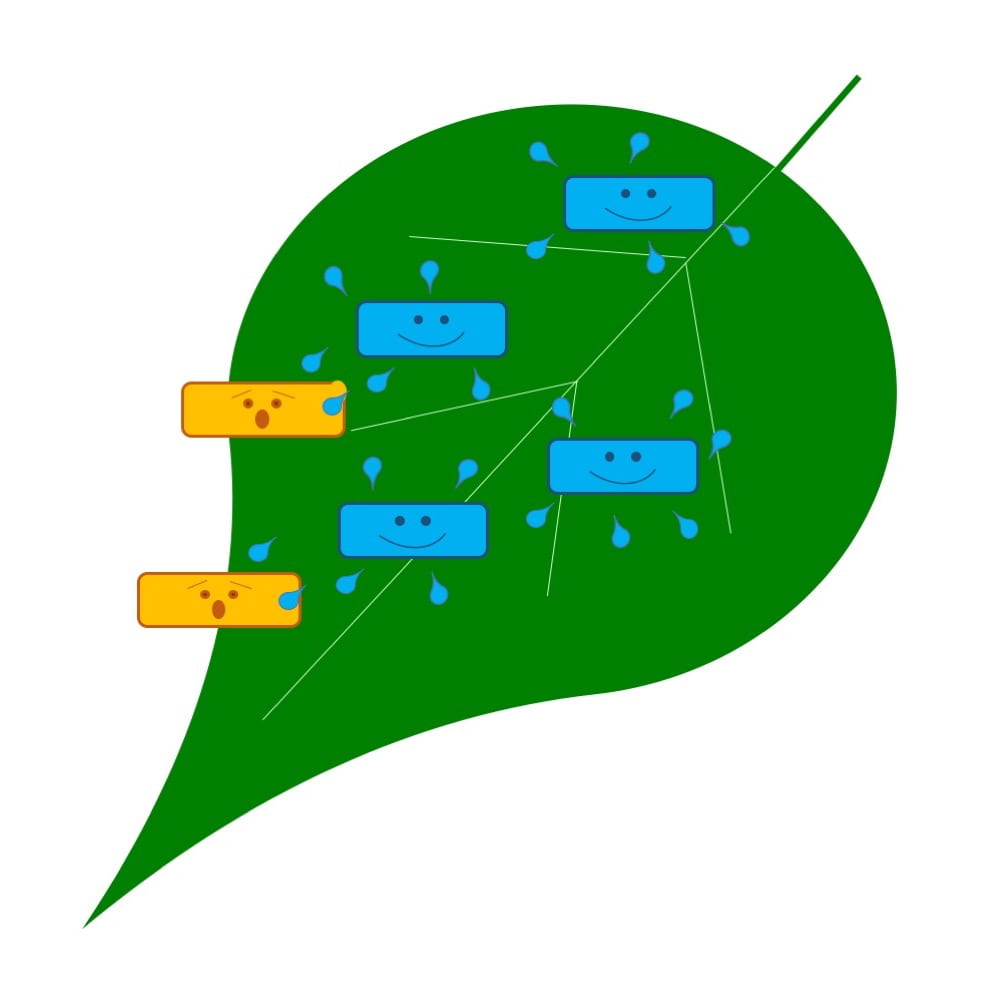
Biological pesticides (biopesticides) are pesticides with active ingredients that are considered natural. According to the EPA they “include naturally occurring substances…microorganisms that control pests…and pesticidal substances produced by plants containing added genetic material.” This last category is more often recognized as certain (but not all) genetically modified organisms (GMOs). The “naturally occurring substances” (plant extracts, some natural chemicals) and microorganisms (bacteria, fungi, viruses) are the focus of today’s post. There’s a deeper dive into how biopesticides work in another blog post.
Biopesticides can be an important tool for integrated pest management because some of them may pose less risk to people or the environment than some conventional chemical pesticides. (But always read and follow the label on biopesticides to ensure you are minimizing risks!)
If you are considering using a biopesticide as part of your IPM program, you will of course want to know whether or not it is effective against a particular pest on a particular crop. A few years ago I wrote a post about efficacy of biocontrol. With some great help, I’ve been collecting summaries of efficacy trials on biopesticides conducted by universities. These summaries are available as downloadable Microsoft Excel spreadsheets for the following crops:
- Berries
- Field crops
- Grapes
- Greenhouse, nursery, and ornamental crops
- Hemp
- Hops
- Tree fruit
The Cornell Vegetables website has some excellent information about biopesticides for vegetable diseases.

Once you download a spreadsheet, take a look at the ‘Notes’ sheet for some important background information, then look at the data on either the ‘Diseases’ or the ‘Arthropods’ (insects and mites) sheet. You can sort the data on either sheet by crop, pest name, name of the product, active ingredient, or other column headings. I’ve included both a simple rating of efficacy (-, +/-, +, ++), and a numerical summary that shows how much each product improved control compared to doing nothing to control the pest.
The spreadsheets do indicate whether each product was registered in New York State at the time the sheet was last reviewed. Remember that you must confirm that the product you want to use is currently registered in New York, and that the label includes your setting, crop, and pest. You can check for current registration and download NYS pesticide labels from NYSPAD.
If you are not able to open an Excel spreadsheet, please let me know and I’m happy to get you the info in a format that works for you.
This work is supported by NYS Departments of Environmental Conservation and Agriculture and Markets, as well as the National Institute of Food and Agriculture, Crop Protection and Pest Management Extension Implementation Program, award number 2021-70006-35672.
This post was written by Amara Dunn, Biocontrol Specialist with the NYSIPM program.
